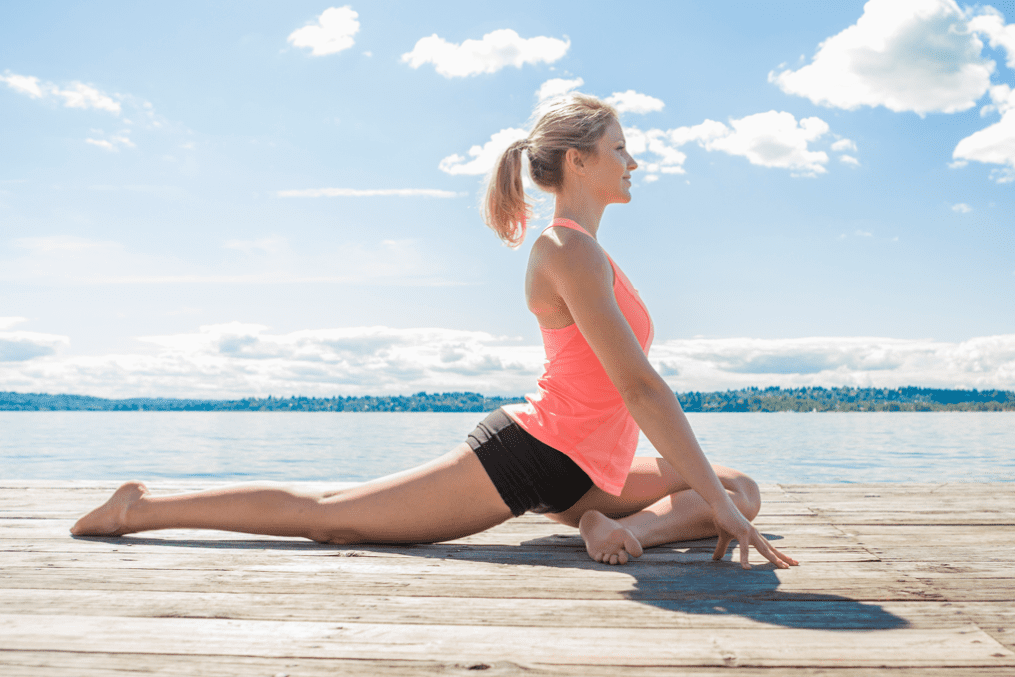

Hunching over desks, running, cycling, swimming and, in fact, most forms of training all take place in the sagittal plane of movement, which means moving forwards and backwards. That can leave you with tight hips. Luckily, the pigeon pose really opens them up, lengthening hip flexors and increasing the range of motion of your femur in the hip socket. Aside from the hips, the pigeon pose also stretches your thighs, groin, back and the little-known psoas muscle, which can help ease sciatica. Here’s yoga instructor Adam Husler’s form-perfecting tutorial.
How to do it
Begin by getting into the downward-facing dog position: form an upside-down V shape, with hands shoulder-width apart, palms pressed into the mat, and feet hip-width apart. Engage your thighs and tilt your bottom upwards, bending your knees if you need to, but keeping your arms, back and hips in a straight line.
From there, bend your right knee and bring your leg forward as if stepping into a lunge, but instead bring your right knee down towards your right wrist. You should end up with your right shin parallel to the front of your mat – or as close as is comfortable for you. Most people will benefit from a yoga block supporting their right glute to help keep their hips square and forward, and knees safe.
Encourage your left hip forward, which will pull the right hip back, using your arms for support – you’ll feel the stretch immediately. Keeping the back straight, fold forwards and take your elbows down to the floor, relaxing your upper body. For more intensity, stay on your fingertips. Either way, keep pulling your left hip forward, right hip back. Stay in the pose for five full, slow breaths, then repeat on the other side.
Mistakes to watch out for…
Don’t rotate your leg! Your back leg should be neutral so don’t let your kneecap roll in. Keep your back thigh engaged to pull the rear hip forward.
Don’t collapse! Keep your hips square, rather than falling onto the hip of your front bent knee. Focus on the feeling, not the appearance.
Read more: 5 top types of yoga and their benefits explained
